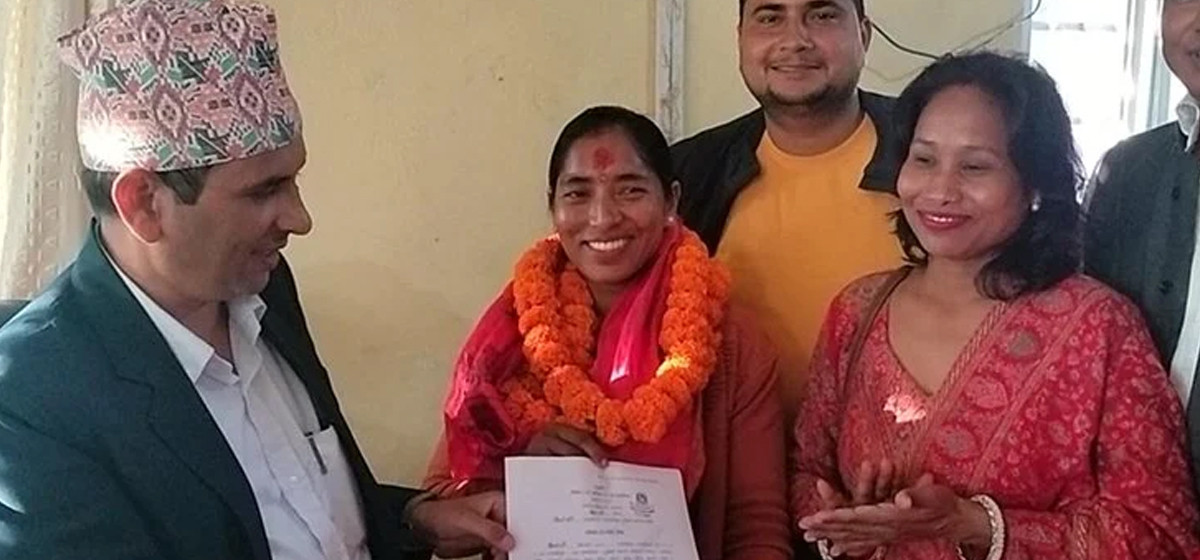For sustainable agriculture in terms of yield, pest management, and fertility of the soil, biodynamic agriculture with proper pest management techniques might be a possible option for Nepali farmers or growers.
Nepal, situated between two giant nations i.e. China and India, is a small country where more than 65 percent of people (report of agriculture census 2079 yet to be published) are involved in agricultural activities to support their livelihoods. The majority of agricultural practices are subsistence-based rather than commercial. However, some commercial farms located in suburban areas are producing good annual turnover. In the year 2021/22, the import of agricultural goods was worth Rs 378.60 billion which was a significant rise compared to the previous year. Neither commercial agriculture meets the national need of people in terms of food production nor do the existing integrated agriculture practices, both plant and animal, get promoted as this could be one of the best quality products because the demand of products growing under an integrated farming system without synthetic chemical fertilizers and pesticides is inclining. In such conditions, the promotion of local products which are produced in some of the potential areas of the mid- and high-hills might be the possible option to trade in the national and international markets. Agricultural goods could be produced in various parts of the country using the principles and practices of biodynamic agriculture.
Biodynamic agriculture
Rudolf Steiner conceptualized the biodynamic approach in Germany in 1924 to overcome the effect of synthetic chemical fertilizers on soil health. Furthermore, the health quality of animals, livestock, and crops was also kept under consideration when the concept was hypothesized. The basic understanding of biodynamic agriculture is that the techniques used are always eco-friendly, and it avoids the use of synthetic chemical fertilizers, requires certification, and leaves no harmful effect on the environment. This concept is applicable in every ecosystem, landscape, and ecology. Although the rules and regulations are well described in the paper, the implementation of these government policies is very poor in Nepal. So, there is not a specific path the government is following in many areas and the same is true about the agriculture sector too.
Pest management
What is missing in budget for agriculture?

Pest management is defined as the suppression of the population of harmful insects below the economic threshold level (ETL). There are various techniques that are used against pests to maintain their population below damaging levels. Nowadays, the most popular technique is chemical control where chemical pesticides are used to suppress the population of pests so that they cannot cause economic loss. However, this technique has a more negative effect not only on the environment but also on non-target organisms like human beings, livestock, and beneficial organisms. To overcome these negative issues, the Integrated Pest Management (IPM) technique was developed in 1970 which is the most common practice these days. Moreover, consumers always prefer to have products that have no pesticide residue. Another pest management technique that is popular is organic pest control (OPM) as this concept does not allow the use of synthetic chemical fertilizers and pesticides during cultivation. However, there are various limitations to the production of organic products. Therefore, biodynamic agriculture-based pest management techniques might be the possible option for many farmers who rarely rely on synthetic inputs for the production of their agricultural goods. Unlike organic pest management and IPM, this technique focuses on biodiversity conservation where a wide variety of flora and fauna including insects are maintained in the ecosystem.
The broad concept which might be applicable in the developing nations/world might be biodynamic agriculture with sustainable pest management. The effectiveness of this concept was described by Professor Jane Memmot and his team at the University of Bristol, by comparing this technique with 20 organic and 20 conventional farms. The parameters they observed were the role of the organism as well as pollination or pest control services which he implies as ‘Ecosystem services’.
The team emphasized the positive interaction between the species like a larva and their natural enemies or the interaction between insects as a pollinator and the effect on the production and productivity of any crop grown in the given area.
This approach does not consider the importation or introduction of any component but rather focus on the uses of locally available plants and animals or their products. Nesting sites for local predators like birds, the availability of water bodies for those natural enemies, and predatory aquatic animals are other major highlights of this concept. Although the concept of organic agriculture is getting popular in Asian countries, European countries have been producing less than 10 percent of agricultural goods utilizing this technique. The majority of agriculture production relies on biodynamic agriculture using efficient pest management techniques.
Implications of BDC for Nepal
In Nepal, the rate of input application is far less than in the developed countries. In some of the districts located in the northern part of Nepal, especially the high hill districts, the use of such synthetic products is nominal or absent. They are asking the government to provide an organic certificate to their goods. However, the provision of certification for organic goods is quite complex. Conversely, instead of declaring the process of organic certification, we can go for the products describing that they are produced under the provision of biodynamic approaches including pest management techniques or biodynamic principles. Moreover, for international trade, they should meet the quality standard of the country or continent, such as EuroGAP, GlobalGAP where export is being made. Being remote and less accessible to the road, farmers from remote areas are not using synthetic chemicals for crop production and protection. Pest management under biodynamic agriculture highlights the concept where the habitat of pests might be changed but without importing or bringing flora and fauna from another area so that it helps to maintain the ecological balance and wide diversity. Sometimes such techniques are useful for the conservation and management of local resources effectively.
Awareness program for farmers, customers
Most of the consumers and farmers of Nepal are unaware of biodynamic agriculture-based production techniques because the concept is not readily adopted by the government. Consumers always seek cheap products as the purchasing capacity of the Nepali people is not strong. There is no provision of government regulation for the use of chemical pesticides. The Rapid Bioassay of Pesticide Residue (RBPR) technique is the most common type of practice which is adopted by the Nepal government for pesticide residue analysis in agricultural goods. This technique, on the one hand, can only check the presence of organophosphate and carbamate-based pesticides but cannot quantify their amount. On the other hand, the trend of using these chemical pesticides for the control of agricultural pests is going down because growers always want to make themselves away from unwanted stuff which may appear at the gate of Kalimati Fruits and Vegetables Market, Kathmandu or other regions where RBPR testing is practiced. Because of the limited availability of testing chemicals, the fungicides-related test is not continuing though the technique can detect the presence of fungicides as well. These days, the use of chemicals other than organochlorine and organophosphate is increasing because these chemicals are not detectable through RBPR techniques. So, the consumption rate of pesticides in the form of residue in agricultural goods is increasing day by day.
Plants and animals kept closer
An integrated farming system is a common type of agricultural concept in subsistence agriculture that not only helps to balance the nutritional status of the soil but also helps reduce pollution which might be caused by mono-livestock practices. So, this practice is known as the holistic approach to overall agriculture. As animals are an integral part of biodynamic agriculture, they provide compost which can provide nutrients needed to maintain proper soil health. In return, animals get to feed, fodder, and pasture from the same field. Besides this, it also provides regeneration for all components like men, animals, livestock, and plants. This technique also helps bring integrity to breed and seed.
On-farm fertility and regeneration
Nepal does not have a fertilizer industry and every year growers depend on the neighboring countries for fertilizers. Biodynamic agriculture can generate on-farm activity so that there is no need to purchase synthetic fertilizers from outside. Furthermore, it maintains its fertility itself so helps sustain the ecological, social, and spiritual viability.
For sustainable agriculture in terms of yield, pest management, and fertility of the soil, biodynamic agriculture with proper pest management techniques might be a possible option for Nepali farmers or growers as the demand for agricultural goods-producing under such conditions is increasing not only in the national markets but also in the international markets. Similarly, keeping the population of harmful pests low without using synthetic pesticides would create a healthy environment for all other organisms. Furthermore, this approach helps build good soil health as a wide range of plants and animals are considered and onsite nutrient recycling practice always provides a positive environment for the earth's surface as well.


































